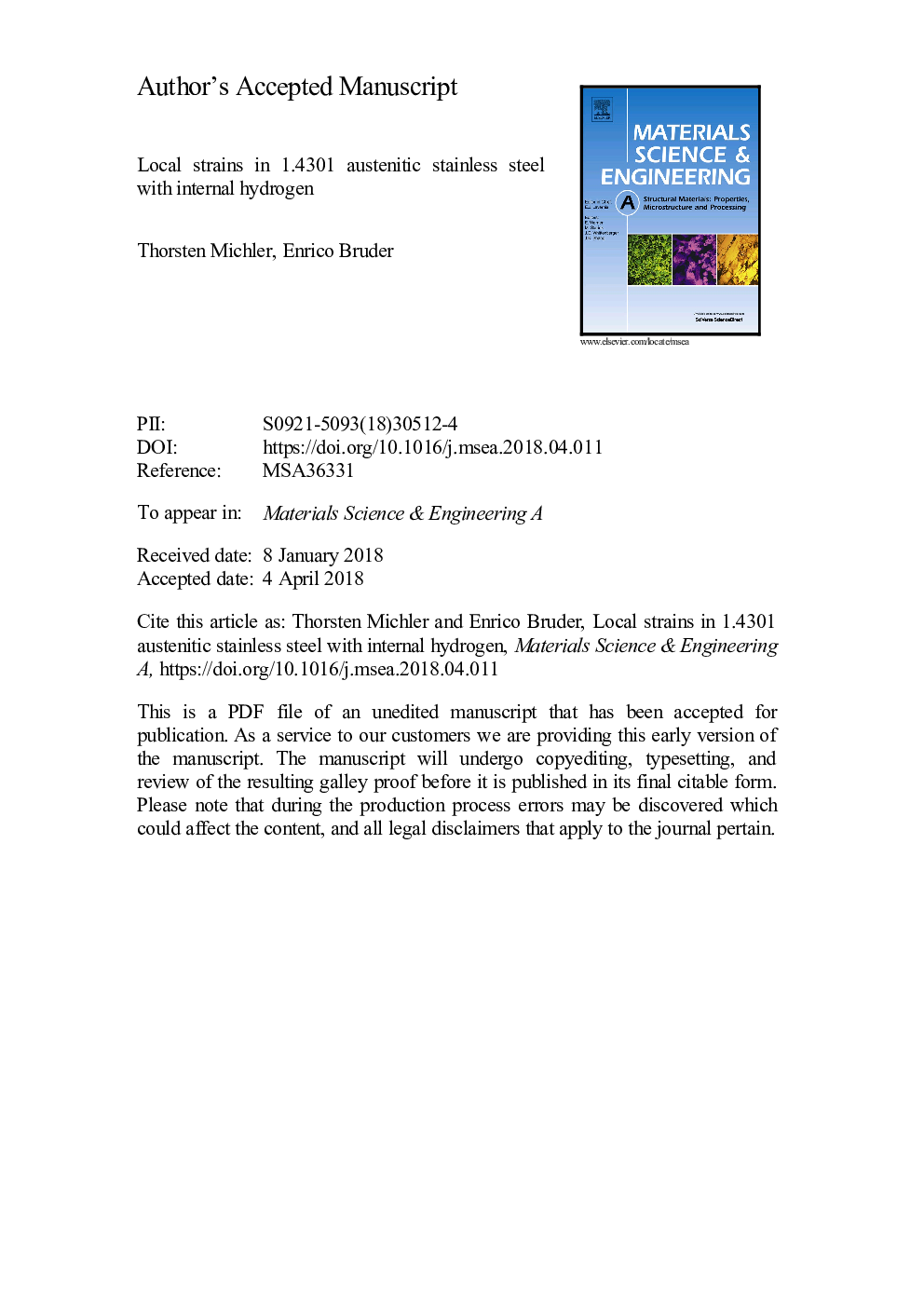| Article ID | Journal | Published Year | Pages | File Type |
|---|---|---|---|---|
| 7972365 | Materials Science and Engineering: A | 2018 | 27 Pages |
Abstract
304 austenitic stainless steel was precharged with hydrogen (â¼ 0.3â¯at%) and subsequently slow strain rate tensile tested at room temperature. The motivation of this investigation was to further clarify the nature of crack initiation, and especially the role of martensitic transformation, in metastable austenitic stainless steel under the influence of hydrogen. However, it must be distinguished between martensite formed by pre-straining, i.e. γ-αâ²-transformation prior to the exposure to hydrogen and γ-αâ²-transformation during plastic deformation under the influence of hydrogen. In the first scenario martensite contents formed by pre-straining could not be correlated with HE effects in tensile tests. In the second scenario crack initiation could always be attributed to locations with local strain incompatibilities like twin-grain boundary triple junctions, γ-αⲠphase boundaries, αⲠmartensite, δ-ferrite stinger and strain incompatibility sites within γ grains. The results clearly show that γ-αⲠtransformation only plays a role in two of the five failure modes indicating that γ-αⲠtransformation is not the sole root cause for the high susceptibility of 304 stainless steel to hydrogen embrittlement.
Keywords
Related Topics
Physical Sciences and Engineering
Materials Science
Materials Science (General)
Authors
Thorsten Michler, Enrico Bruder,
